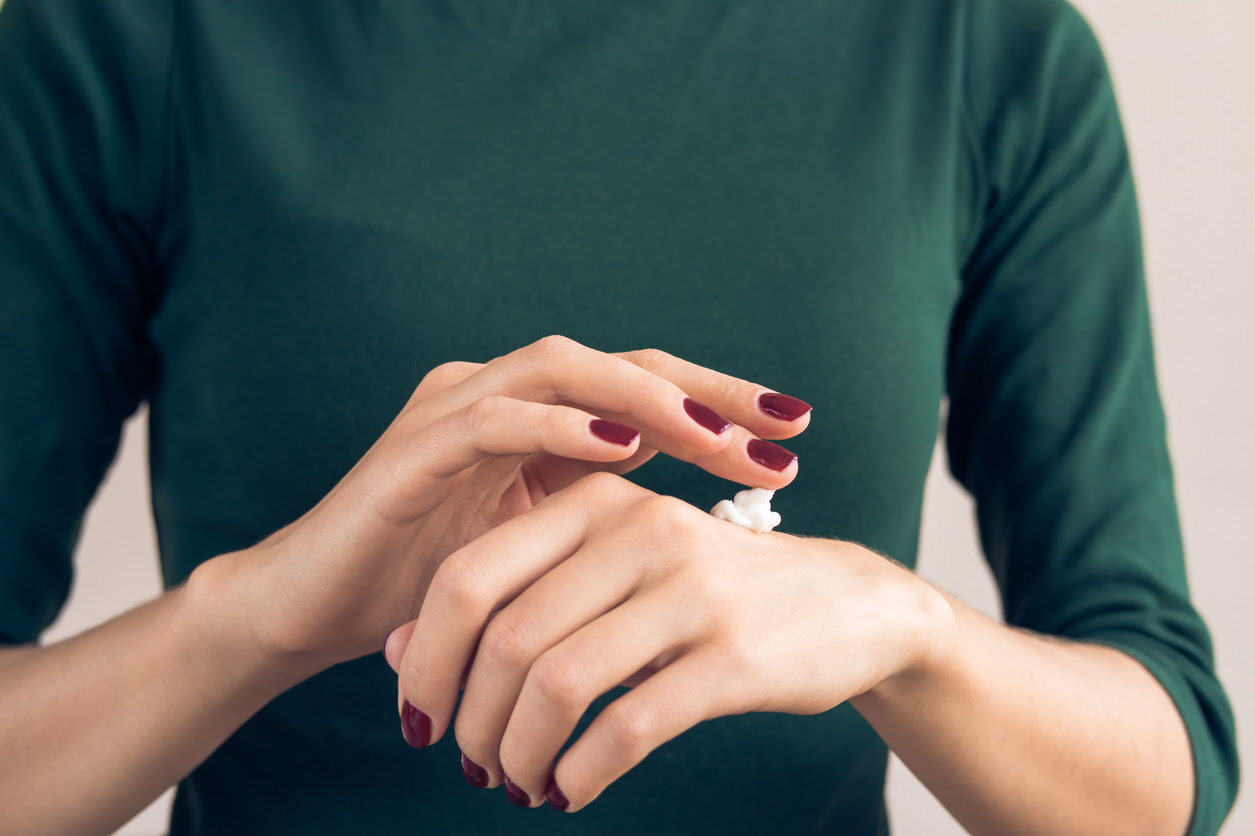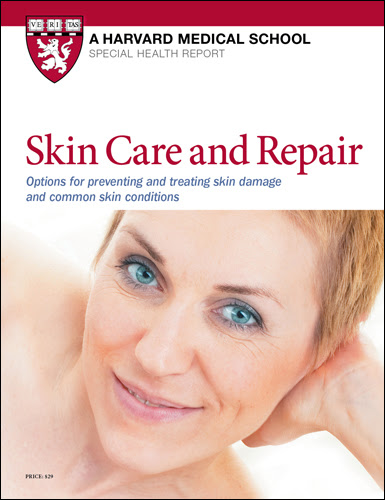
Choosing a good moisturizer for your skin |

A good moisturizer is one of the foundations of an effective skin care regimen for dry, older skin. Moisturizers can soothe dry skin and make wrinkles less noticeable, even though the effect is temporary. But with so many to choose from, how do you decide?
Petroleum jelly is one of the most effective moisturizers, especially when used right after bathing to seal in moisture. It is also one of the least expensive. But many people dislike using it on their faces because it looks and feels greasy. Instead, creams and lotions that contain some water are a better choice for a facial moisturizer. Many of these creams and lotions are humectants, an oil-free class of moisturizer that binds water to skin, so the smoothing, softening effects may last longer.
Most moisturizers contain water, glycerin, petrolatum, stearic acid, propylene glycol, and lanolin. Some contain botanical ingredients, such as jojoba oil, coconut oil, safflower oil, and linoleic acid, which help maintain the skin's outer layer of keratin and keep skin supple. Manufacturers use other ingredients, such as cetyl alcohol, palmitic acid, and dimethicone, to give moisturizers a creamy, velvety, or translucent look and feel, and to help shore up the "mortar" that keeps skin soft and smooth.
Some moisturizers also contain sunscreens and cosmeceuticals, which help prevent or even correct fine wrinkles, uneven skin pigmentation, and other signs of aging and photoaging.
For more advice on keeping your skin healthy, read Skin Care and Repair, a Special Health Report from Harvard Medical School.
Fat-dissolving treatments for a double chin

Image: © DAJ | Thinkstock
Many people are bothered by double chins and try to conceal them behind turtleneck shirts and scarves. However, recent advancements have expanded the options for jowl removal beyond surgery to in-office treatments.
Cryolipolysis (Cool Mini)
This procedure, also known as "cool sculpting," treats a double chin. The clinician places a handpiece under the chin and chills fat cells there almost to the point of freezing, damaging their membranes so they are absorbed and metabolized by the body. The treatment itself takes about an hour, and results are seen over the subsequent two months. The procedure is usually effective and can be performed more than once. It can also be used to reduce love handles on the waist. The cost is approximately $1,000 per treatment.
Injections to damage fat (Kybella)
This product, approved by the FDA in 2016, contains a substance that damages fat cells. After applying local or topical anesthesia, the physician selects 10 to 15 injection sites in the neck area. The shots can be slightly uncomfortable, and there is potential for swelling, pain, and redness for one week. The fat under the chin will disappear over the course of the next four to six weeks. Like cryolipolysis, these injections are usually effective and can be repeated two or three times. The cost is similar, too: about $1,000.
To learn more about other cosmetic procedures and ways to care for your skin, buy Skin Care and Repair, a Special Health Report from Harvard Medical School.
 |
Skin Care and Repair
Featured content:
| • | What is skin? |
| • | Skin and the aging process |
| • | Common skin conditions |
| • | Skin cancer |
| • | SPECIAL SECTION: Protecting your skin |
| • | ... and more! |
Click here to read more »






















.png)











No hay comentarios:
Publicar un comentario